Heating of pipes with cable: implementation features
The pipeline in a private house has a weak point - vulnerability to winter frosts, as a result of which exposure, the liquid flowing through pipes can crystallize, which will not only stop the system, but also threaten its integrity.
There are several ways to deal with this problem. Next, we will analyze its most effective solution, which includes the use of electrical wires.
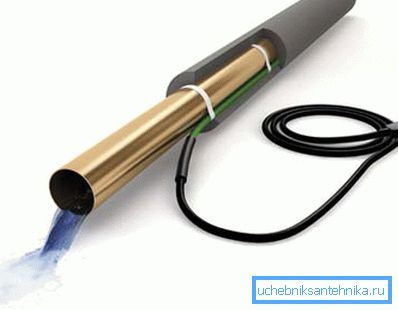
Features of cable heating
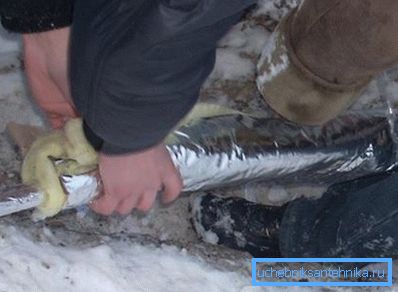
The main methods for preventing the glaciation of pipes, which have been used for a long time, are immersion of the structure below the ground freezing level and insulation of thermal insulating materials. But many factors can reduce the reliability of such measures.
If you use the heating of the pipeline with an electric cable, then you will be assured of the protection of the system from freezing.
Principle of operation
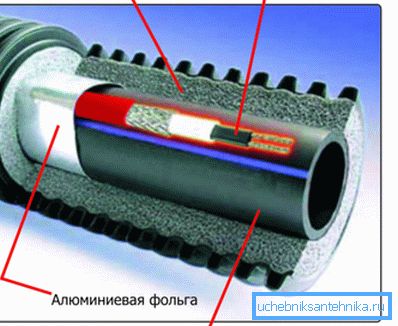
Heating is carried out thanks to several components:
| Method | Purpose |
| Heating cable | This is the main element that provides heating due to the electric current applied to it. |
| Thermostat | Measures the temperature of the liquid, sends signals on and off the heating system when it is a certain drop |
| Aluminum Foil Tape | Fixes the cable on the pipe |
| Thermal insulation | Increases the efficiency of the wire, directing heat strictly to its destination, preventing it from spreading to the environment |
Tip: if you apply a self-regulating cable for heating pipes, then you can do without the thermostat. This will simplify the system, making it more resistant to damage.
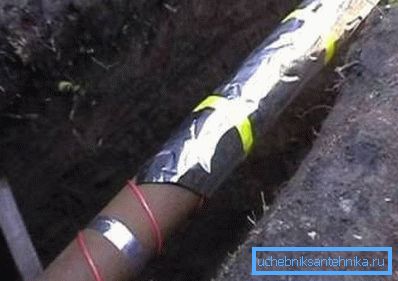
That is, a wire is fixed on the pipe with the help of a foil-scotch tape, which is then connected to the electrical network, and a thermostat that controls temperature changes in the fluid flowing inside. At the moment of cooling, a signal is given, and the cable begins to heat up, raising the temperature to a safe level.
It is noteworthy that it can be carried out as heating the pipelines with a cable inside the pipe, and outside it. The second option is more common and convenient.
Benefits
There are several main advantages of this heating method:
- Guaranteed work of sewage and water supply in any weather. As long as there is electricity, your pipelines will not freeze.
- The possibility of the location of pipes above the recommended zone. This will allow to distribute the roads more rationally and reduce the volume of earthworks.
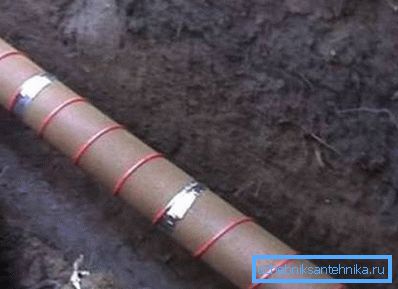
- No need for repair work after severe frosts. After all, ice crystals formed as a result of insufficient warming can significantly damage the pipe material.
Thus, we see that even though the price of an additional device is rather big, the savings it provides due to its functionality more than pay for it.
Installation
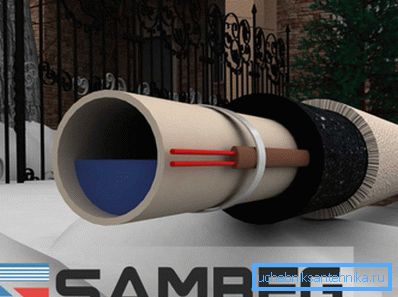
To create the heating of water pipes with your own cable, it is first necessary to calculate the heat loss of the system in order to choose the right power.
Tip: in the case of polyethylene and plastic pipes can not install equipment with a capacity of more than 15 W / m. It can damage their structure.
Payment
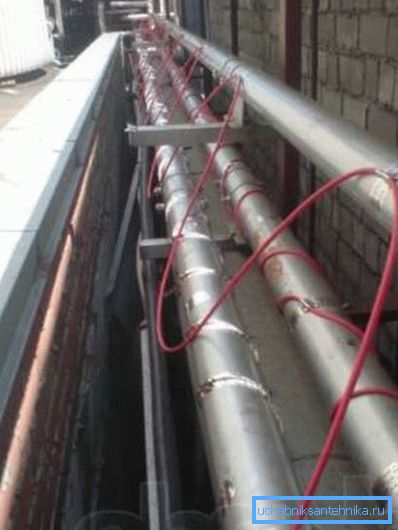
The formula for finding heat loss:
Q = (2? 3,14? W? L? (Text-tbunk) / Ln (D / dtr.nar))? 1,3, where
| Symbol | Designation |
| Q | Heat loss, W |
| W | Heat conductivity index of insulation, most often it is 0.04 [W / m? ° C] |
| L | Length of highway, m |
| text | Water temperature inside the pipeline, ° C |
| tbunk | Ambient temperature, ° C |
| D | External section taking into account the insulation, m |
| dtr.nar | External section excluding insulation, m |
| 1,3 | Selected safety factor |
Knowing the value of Q, we can find the optimal length of the wire: Lcab= Q / Pbeats. cab, where rbeats. cab - this is the power density of the wire.
Piling
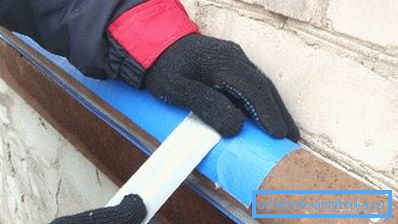
During the laying and fixing the wire, the technical instruction assumes the observance of some rules:
- Bending of the wire should not be more than its radius, as this will lead to the occurrence of a break.
- Eliminate the presence of sharp objects in the path of laying the wire, they can damage the insulation.
- Examine the pipeline for leaks and other damage. If they are found, the installation of the cable is excluded until the completion of repair work.
- Do not plug a wire into a network that is coiled up; this can cause fire and short circuit.
- After installation of the heating system, be sure to cover it with thermal insulation. In the opposite case, you will use it to heat the liquid that is not inside, but the earth that surrounds the pipeline.
Conclusion
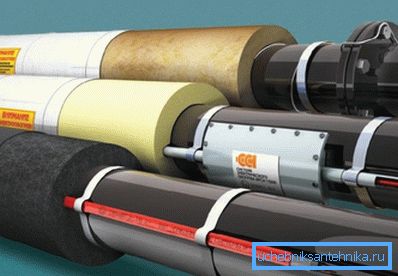
Freezing of water in the pipes is fraught with not only the termination of the pipeline, but also its damage. The most effective way to avoid this is to install heating with a heating cable.
In this case, even the location of the system above the level of soil freezing will not be critical. Calculation of the length of the wire and its installation features are set out above.
The video in this article will provide you with more information. Take care of your water system properly.